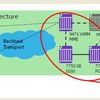By: Mae Kowalke, TMCnet Contributor
The first wave of large-scale LTE rollouts have shown that LTE networks have significantly greater packet core signaling volume. This is partly due to the flatter, all-IP architecture of LTE where macro and micro cells are directly connected to the mobility management entity (MME), the dedicated control plane element in the evolved packet core. This is also because of the increased overall network use that comes with subscribers who have access to a faster network.
An MME can experience a sustained signaling load of more than 500-800 messages per user equipment (UE) during the normal peak busy hours and up to 1500 messages per user per hour under adverse conditions, according to a recent blog by David Nowoswiat and Gordon Milliken of Alcatel-Lucent, Managing LTE Core Network Signaling Traffic.
This is why it is incumbent that operators intelligently manage packet core signaling.
“As LTE grows in popularity, signaling in the EPC will continue to rise, which increases the potential for control plane congestion and signaling storms if not properly managed,” noted the authors. .
“Specifically,” noted the blog post, mobile network operators “need to deploy a carrier-grade, next-generation MME/Serving GPRS Support Nodes (SGSNs) platform that not only has the capacity, scalability and CPU processing performance, but also the capability to intelligently manage this traffic to reduce overall core signaling.”
Two areas where signaling efficiencies can be gained are in MME paging and Tracking Area (TA) management procedures.
Paging procedures are signaling messages between the MME, the eNodeB and the UE. Paging is required to locate a UE in the network when it is in an Idle state, making its exact location in the network unknown. A TA represents a group of contiguous cells within the Evolved Universal Terrestrial Radio Access Network (E-UTRAN). It is used by the MME to track and locate the UE when in Idle mode as it moves through the network.
Signaling traffic from MME paging the UE is significant, as illustrated by field data from a LTE service provider in the U.S.
Source: Alcatel-Lucent TechZine Managing LTE Core Network Signaling Traffic
Paging is more than 28 percent of the total signaling load on the MME.
TAU procedures also have the potential to generate a lot of signaling if a UE is moving along the border between TAs that are not all part of its TA list, especially when the TA size is large, according to the blog post. This “toggling” effect happens when the UE moves in and out of TA boundaries which generates additional TAU signaling.
One way to reduce the signaling load is with a Next-generation MME /SGSN such as the Alcatel-Lucent 9471 Wireless Mobility Manager. It allows mobile network operators to tailor the MME paging policies for each type of service, thereby better managing requests.
Further, dynamic TA list management techniques using the 9471 Wireless Mobility Manager can reduce MME signaling loads. These techniques optimize the number of TAs in the UE TA list as the UE moves through the network, according to the blog.
“When cyclic patterns in the UE movement are detected, the TAs are automatically added from the UE’s registered TA list as it crosses the boundaries of either 2 or 3 TAs,” explained the authors.
By constantly updating and optimizing the UE TA list, fewer TAU requests are generated and the toggling effect at TA boundaries is reduced.
As mobile network operators move to LTE, they need to take signaling management into consideration because so many more requests are made with LTE over previous technologies.









